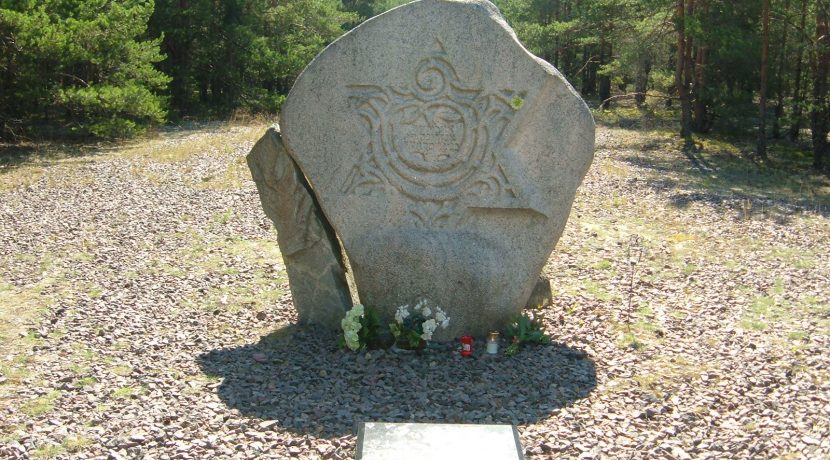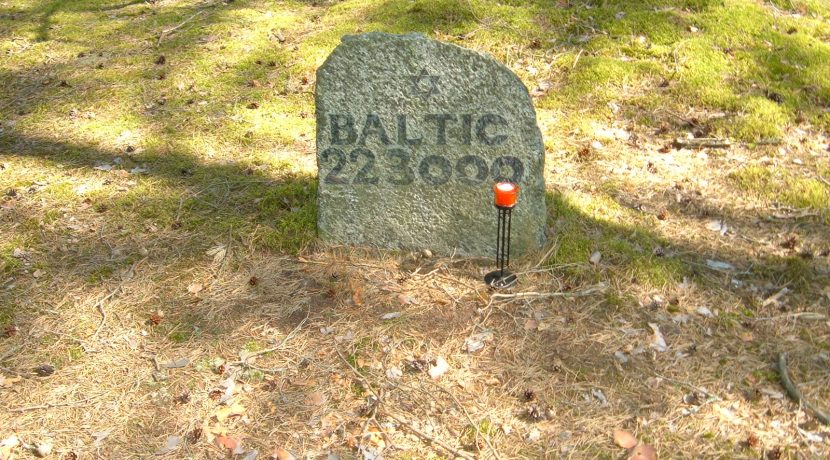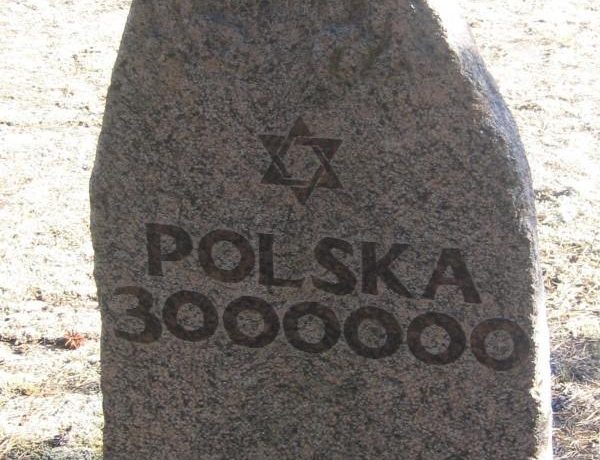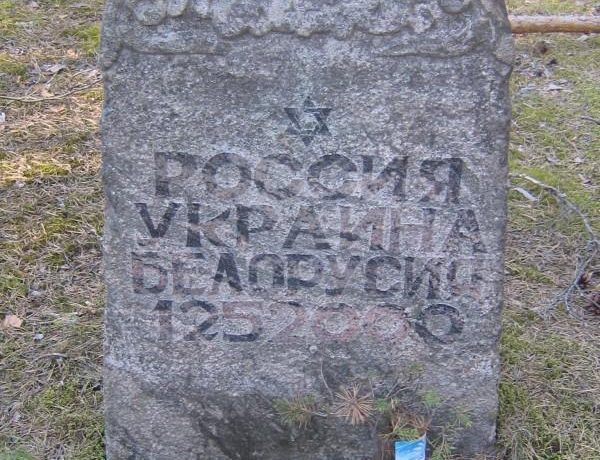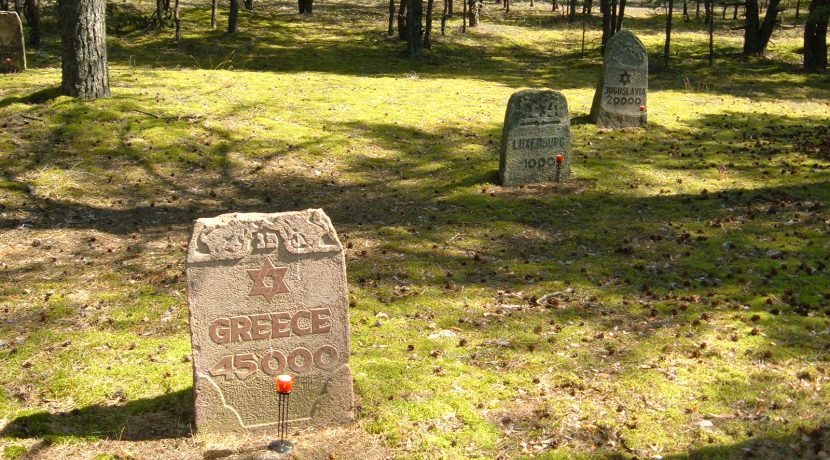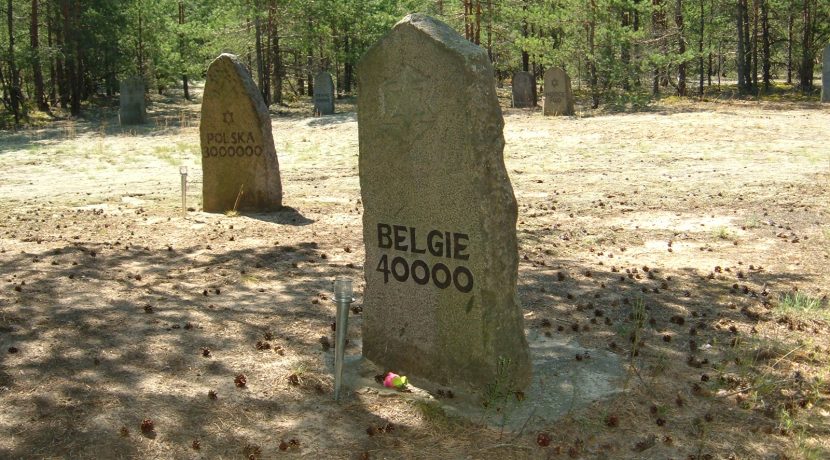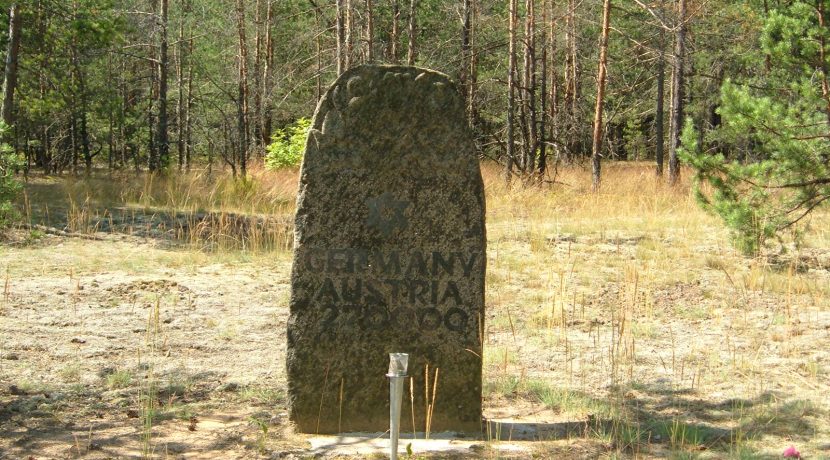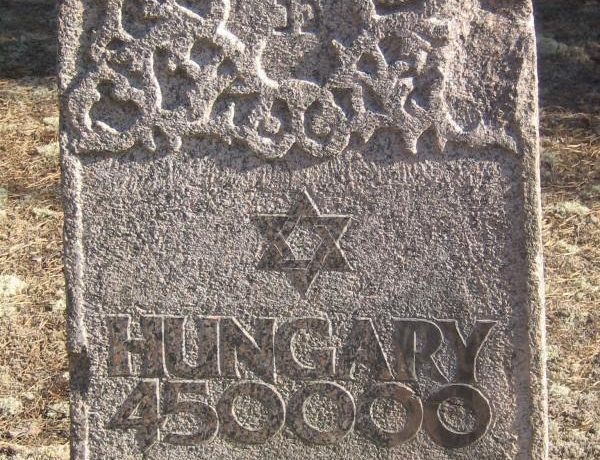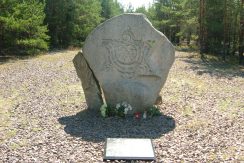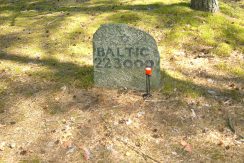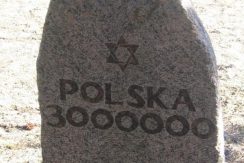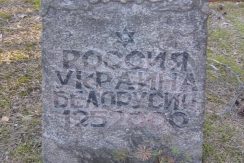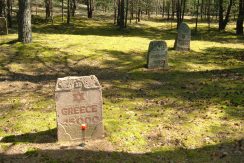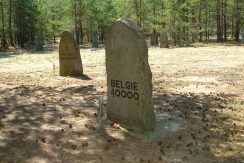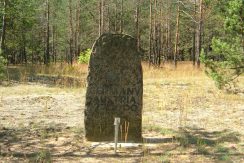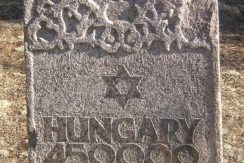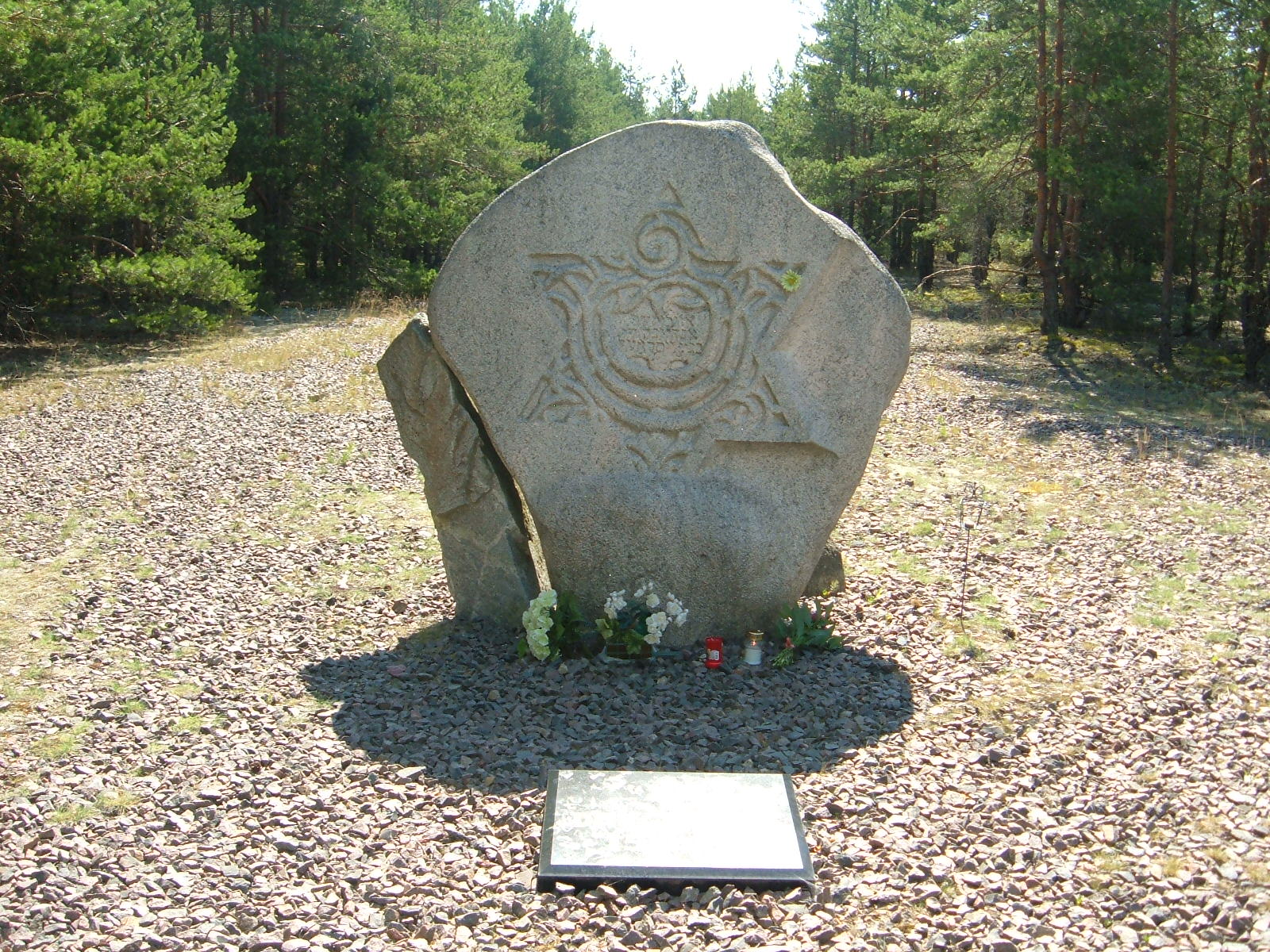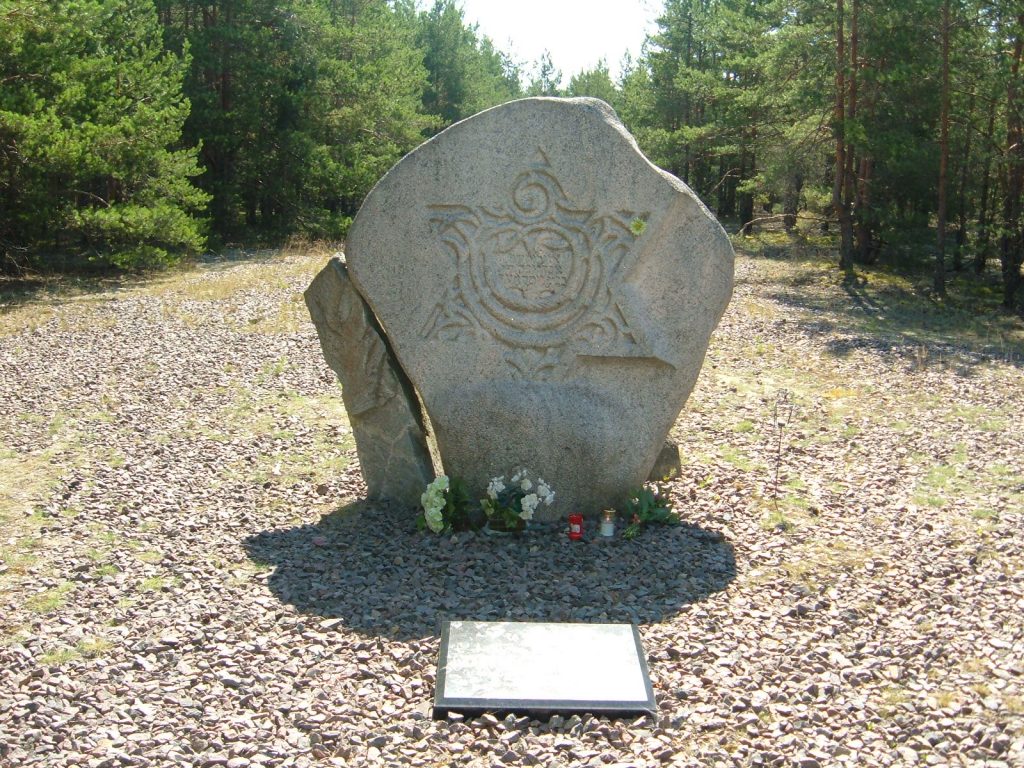The Nazi troops entered Daugavpils on 6 June 1941 and already on the first days of occupation launched the campaign to annihilate the Jews of Daugavpils. Pursuant to an order of 15 July 1941 all Jews had to move to the ghetto – a fortification on the left bank of the Daugava River. The majority of those imprisoned in the ghetto were Jews from Daugavpils; however, later a couple of thousand Jews from towns and rural areas in the vicinity were driven here – from Krāslava, Grīva, Višķi, Indra, Kārsava, Dagda, Ilūkste district and other places (also from Lithuania). In total approximately 15 000 to 20 000 Jews were placed in the ghetto, of which less than 100 persons survived.
From July 1941 to the end of 1943 in the Mežciems (historical name – Poguļanka) Forest Jews, taken from Daugavpils ghetto at various times, were shot here. The exact number of victims is unknown.
The Memorial to commemorate the victims of genocide against Jews and prisoners of the Daugavpils ghetto was opened on 10 November 1991, commemorating the fiftieth anniversary of the beginning of the Holocaust (author of the memorial – sculptor Oleg Marinoha). The memorial consists of a granite stele with the Star of David cut into it and an inscription on Yiddish “To the Memory of the Children of Israel”, with 16 stone steles placed on both sides of it, symbolically reminding of the memory of the Holocaust victims from various European states. These steles also bear the Star of David, as well as the names of the states and number of those who perished: Czechoslovakia – 30000, Russia/Belarus/Ukraine– 1 252 000, Baltic States – 223 000, Greece – 45000, Luxemburg – 1000, Yugoslavia – 20000, Romania – 300 000, Italy – 3000, Belgium – 40 000, Poland – 3 000000, Holland – 105 000, Norway – 900, Bulgaria – 14 000, France– 90 000, Hungary – 450 000.


